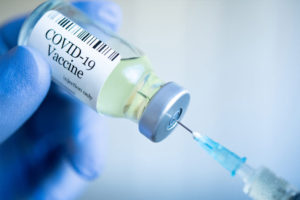Understanding the COVID-19 Vaccination Situation in the United States
With the Covid-19 pandemic now coming close to one full year of prominence and surging once again most eyes in the United States have begun to focus on the vaccination rollout soon to be taking place across the country in the hopes of seeing the end of the virus come soon. However, with an unprecedented turnaround for this vaccination and two different versions being released, misinformation and confusion are running rampant. This article will serve as your guide in understanding what the situation really is.
The Two Vaccines for COVID-19:
The first vaccine to meet the FDA’s requirements in order to be released to the public was Pfizer’s which is a pharmaceutical giant. Following that, Moderna, a biotech company that had never released a vaccine to the public, also passed testing with their vaccine and was granted emergency permission for it to be released for use on the general public with backing from the Center for Disease Control. Both vaccines use Messenger RNA (mRNA) to mimic the spikes found on the Coronavirus which when introduced to the immune system leads to antibodies for the Coronavirus. Once the antibodies have developed, the body is prepared for contact with the full virus and able to successfully fight it off. The differences between the two structurally lie in the lipid (fat) systems used to deliver the mRNA into the body. These differences are relatively minor and do not seem to have any tangible difference in efficacy as both vaccines were about 95% effective in trials across gender, age, ethnic, and racial demographics. Both vaccines are also administered across two doses.
The biggest difference between the vaccines is in their storage temperature. Pfizer’s vaccine must be stored at extremely cold temperatures and lose effectiveness five days after refrigeration. This has created logistic difficulties for transportation and storage, especially in areas of the country without comprehensive infrastructure built to accommodate those needs, or that are more difficult to reach from distribution centers. Moderna’s vaccine is able to be stored at -20 degrees celsius as opposed to Pfizer’s -75 degree needs, as well as lasting up to 30 days after refrigeration. This makes it significantly easier for storage and transportation which is why Moderna’s has received more support from the FDA and CDC. Both vaccines have been deemed safe with good safety profiles in clinical tests. Symptoms can develop after taking the vaccine such as fevers, swollen lymph nodes, pain at the injection site, fatigue, and chills. However, serious non-fatal symptoms were rare and did not meet the FDA levels needed to prevent emergency authorization.
Distribution of the Vaccine
The United States has acquired the rights to millions of vaccinations from both companies but has highly favored Moderna’s after its approval due to its advantages in storage and transportation. This is reflected in the greater than 3,000 sites set to receive the Moderna vaccine one day after approval as opposed to Pfizer’s 636. Currently, two hundred million vaccines have been purchased from Moderna by the United States with vaccines having been in production since testing and shipment already taking place. Following the distribution, states and local levels will determine the order in which vaccines are delivered, although it is expected for nearly all to follow federal level priority guidelines which place essential workers such as nurses and doctors at the front followed by the most at-risk individuals.



